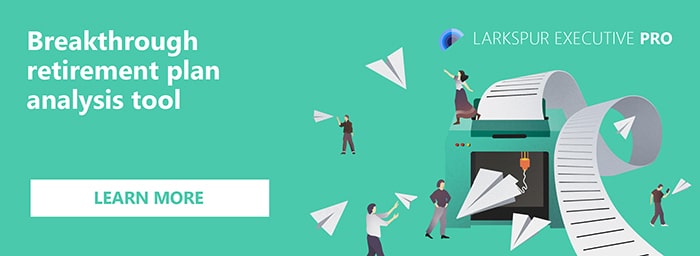The end of January is a time to stop reflecting on last year and start really implementing changes in your professional life. For fiduciaries the focus is always on improving a plan’s governance and ensuring plan participants are satisfied with your work. Here are a few ideas for plan fiduciaries to consider in 2023.
Analyze Your Investing Alternatives
The procedure for examining the investments available in a retirement plan must be in place for the relevant sponsors. These investment options are often referred to as designated investment alternatives. Retirement plan sponsors must first select and then keep a very close eye on these investments.
A core premise of behavioral finance is that having more options doesn’t always result in smarter choices. So what exactly is going on with those expanding 401(k) investment menus? According to the 65th annual Plan Sponsor Council of America’s Survey of Profit-Sharing and 401(k) Plans, more than a quarter of plan sponsors give 26 or more options, while 18% offer 21–25, and 27% offer 16–20.
It’s likely that some of the funds on the present menu are either underutilized or not used frequently. These are options that do little more than add clutter to your investment evaluation and the choices made by participants.
Determining the approach you’ll employ, repeating the process, and documenting that it was done are all examples of best practices for choosing and monitoring investment options. Even though it seems straightforward, many retirement plan sponsors are unable to prove that they have followed a responsible procedure.
Check Target-Date Funds
Target-date funds (TDF) have maintained high inflows, which is not surprising given their status as the qualified default investment alternative (QDIA) for the majority of 401(k)s. Despite this, a very small number of companies still own the great bulk of those assets, and these companies’ glide paths are not as distinct as their marketing brochures may lead one to believe.
A TDF is, of course, an investment in the plan, and like any investment in the plan, if it doesn’t meet requirements, a plan fiduciary would undoubtedly want to correct that issue, including withdrawing the fund if necessary.
TDFs are, nevertheless, commonly, if not always, offered and purchased as a bundle. Even while each fund in the family is evaluated independently, as it should be, splitting the set has a number of complex side effects, not the least of which are participant communication problems and glide path compatibility. It’s not impossible to overcome these, and unlikely that they would be judged enough to keep an unwise investment on the plan menu.
Common justifications given for TDF selection include price/fees, past performance, and platform are among the common justifications given for TDF selection. However, it’s likely that some of these justifications are based on an unbiased assessment of the TDF’s suitability for their plan and employee demographics. Regardless of the reason, it could be that something has changed, whether it be with the TDF’s designs, the markets, your plan, staff, or all of the above.
Review plan fees
As an ERISA-compliant retirement plan sponsor, you have a responsibility to ensure that fees are fair. Ensuring that your fees are fair is not merely a recommended practice in the area of qualified retirement plans like 401(k)s, as it could be in other company contexts. The law requires you to ensure that such fees are reasonable.
Due to the fact that fees affect investment performance and, ultimately, the amount of money available to support the participant throughout retirement, government authorities are especially concerned about fees that are passed on to participants. As a result, it’s essential to have a strategy in place to keep an eye on retirement plan expenses.
A benchmarking study that compares your retirement plan fees for different services including record-keeping, retirement plan administration, investment advice, and mutual fund fees to other plans of a comparable size is one of the best practices for figuring out whether your rates are acceptable. You can establish a baseline for identifying areas where your retirement plan’s fees might not be competitive with those offered in the market by comparing your plan’s fees to those of other retirement plans that are similar to yours; in terms of either the total assets in the plan or the number of participants. A formal benchmarking study is an excellent place to start when determining if the rates for your plan are acceptable.
The beginning of the year is an excellent time for a retirement plan advisor to reconsider investment choices and make necessary changes.Be sure to keep an eye on your fiduciary responsibilities and benchmark your investment and provider fees at least once a year with our tool Larkspur Executive. Schedule a Demo with us to see how to benchmark your plan or reach out to clientsuccess@rixtrema.com to set up a demo.




